Virginia Museum of Fine Arts Acquires 19th-Century Work by Cheyenne Artist Howling Wolf At World Record Price For a Native American Ledger Drawing
- RICHMOND, Virginia
- /
- October 13, 2020
The Virginia Museum of Fine Arts (VMFA) announced today that it acquired a major work by a 19th-century Native American artist Honanistto or Howling Wolf. The acquisition entitled A Southern Cheyenne Ledger Drawing is a watercolor and ink drawing dating to circa 1875. Howling Wolf’s long life, circa 1849 to 1927, spanned the most tumultuous periods in the history of the Southern Cheyenne (Chian) people. He was an exceptionally talented artist who depicted the Plains people and documented significant events and changes in Cheyenne society, while also portraying an individual’s place within this volatile period of American history. The work is the first Native American ledger drawing to enter VMFA's collection. An original and rare stereograph portrait of the artist was also acquired by the museum.
VMFA’s growing Native American art collection includes two- and three-dimensional works dating from prehistoric times to the present day. Compelling artwork by modern and contemporary artists such as Jaune Quick-to-See Smith (Salish/Kootinai), Troy Sice (Zuni), Wendy Red Star (Crow), Virgil Ortiz (Cochiti Pueblo), Eudora Montoya (Santa Ana Pueblo) and Holly Wilson (Delaware/Cherokee) as well as the beautiful and intricate objects by unnamed aboriginal artists from the Arctic North, Northwest Coast, Plains and Southwest regions provide testament to the skill and aesthetic care of their makers.
“VMFA continues its efforts to grow this important collection—the museum has acquired more than 200 works by Native American artists within the last five years alone,” said Alex Nyerges, VMFA’s Director and CEO. “We are committed to collecting and exhibiting Native American art and recognizing the contributions of the Native communities here in Virginia. Adding Howling Wolf’s drawing to the collection enables the museum to tell his fascinating story and document the history and artistry of the Cheyenne people.”
Howling Wolf was the son of Eagle Head, a successful warrior and leader who became a council chief of the Southern Cheyenne around 1874. Both father and son were members of the Bowstring Society, the strongest warfare group within Southern Cheyenne society in the 1870s. Howling Wolf and his father survived several clashes, one of the earliest was an attack on their encampment at Sands Creek by the Colorado Militia in 1864 when he was only fifteen years old. By the time of his death Howling Wolf was both a revered warrior and one of the most recognized masters of the Native American art form of ledger drawing.
A Southern Cheyenne Ledger Drawing was acquired by VMFA at Heritage Auctions in Dallas, Texas. Michael Taylor, VMFA’s Chief Curator and Deputy Director for Art and Education, successfully acquired the work for the museum for $106,250 after a vigorous bidding war resulting in a world-record hammer price for a single ledger drawing. “Ledger drawings are important to the history of Native North America both as an art form and as historical documents,” said Dr. Johanna Minich, VMFA’s Assistant Curator for Native American Art. “Acquiring a ledger drawing for the Native American collection has been one of my priorities. When this work by Howling Wolf came up for auction Michael Taylor and I discussed it and decided that if we wanted a ledger drawing for VMFA we should do what we could to obtain one of the best. I think we got it.”
Ledger art grew from the traditions of visually recording individual exploits and tribal histories as testimonials. Pre-reservation ledger drawings emphasized battle scenes or horse raids. Reservation drawings dating from around 1870 to 1890 documented tribal histories and traditions. In 1875 the War Department acted to remove men they deemed “criminal offenders” in battles from their own people and send them far away to Fort Marion, a prison in Saint Augustine, Florida. Howling Wolf and his father were among the seventy-two men from Cheyenne, Kiowa, Comanche, Arapaho and Caddo tribes who were forcibly removed. A Southern Cheyenne Ledger Drawing is a reservation drawing made during his captivity.
While at Fort Marion the men, surprisingly, could move freely about, work for wages and pursue artistic endeavors. With access to new materials like paper, watercolor paints, crayons and ink, Howling Wolf began to vary his themes and compositions and the resulting art demonstrates his powerful individualism.
A Southern Cheyenne Ledger Drawing depicts a meeting of the Bowstring Society with its leaders arriving on horseback. The chief, a famous Cheyenne warrior named Roman Nose, is shown with an elaborate headdress featuring a bird design. Intricately detailed tipis flank the sides of the composition with one placed in the foreground to suggest their circular formation around the main activity. Seven other society members, with their backs to the viewer, bear feathered and bent lances indicating their membership in the Bowstring Society. The inclusion of the American flag indicates that even though this warrior society continues the members have acquiesced to the new leadership of the colonizers.
“The composition is so bold and complex,” said Taylor. “The outline is firm and confident and the colors are vibrant and exuberant. We knew we had found an incredible Native American ledger drawing for VMFA and are delighted to share it with our visitors. Our goal in the coming years is to build a world class collection of Native American art at the museum and this purchase, along with many others that Johanna has made in the past five years, signals our intent.”
The Virginia Museum of Fine Arts is the only art museum in the United States open 365 days a year with free general admission. For additional information, telephone 804.340.1400 or visit www.VMFA.museum.







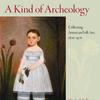

![Peter Paul Rubens (Flemish, 1577–1640), After Titian (Tiziano Vecelli) (Italian [Venetian], c. 1488–1576), Rape of Europa, 1628–29. Oil on canvas, 71 7/8 x 79 3/8 in. Peter Paul Rubens (Flemish, 1577–1640), After Titian (Tiziano Vecelli) (Italian [Venetian], c. 1488–1576), Rape of Europa, 1628–29. Oil on canvas, 71 7/8 x 79 3/8 in.](/images/c/e2/2e/Jan20_Rape_of_Europa100x100_c.jpg)


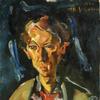
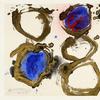
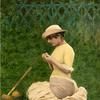



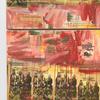



10100x100_c.jpg)